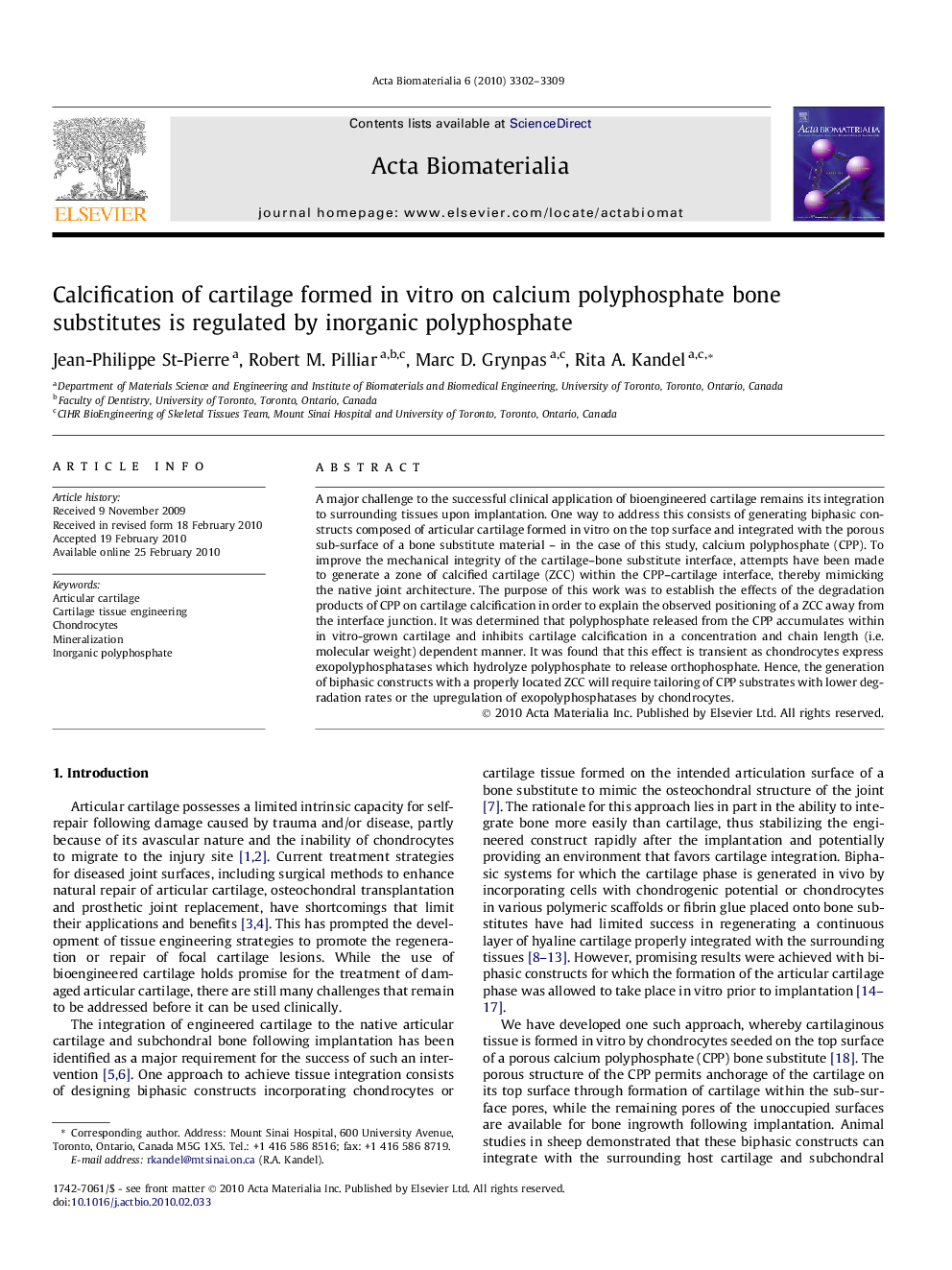| Article ID | Journal | Published Year | Pages | File Type |
|---|---|---|---|---|
| 2296 | Acta Biomaterialia | 2010 | 8 Pages |
A major challenge to the successful clinical application of bioengineered cartilage remains its integration to surrounding tissues upon implantation. One way to address this consists of generating biphasic constructs composed of articular cartilage formed in vitro on the top surface and integrated with the porous sub-surface of a bone substitute material – in the case of this study, calcium polyphosphate (CPP). To improve the mechanical integrity of the cartilage–bone substitute interface, attempts have been made to generate a zone of calcified cartilage (ZCC) within the CPP–cartilage interface, thereby mimicking the native joint architecture. The purpose of this work was to establish the effects of the degradation products of CPP on cartilage calcification in order to explain the observed positioning of a ZCC away from the interface junction. It was determined that polyphosphate released from the CPP accumulates within in vitro-grown cartilage and inhibits cartilage calcification in a concentration and chain length (i.e. molecular weight) dependent manner. It was found that this effect is transient as chondrocytes express exopolyphosphatases which hydrolyze polyphosphate to release orthophosphate. Hence, the generation of biphasic constructs with a properly located ZCC will require tailoring of CPP substrates with lower degradation rates or the upregulation of exopolyphosphatases by chondrocytes.
